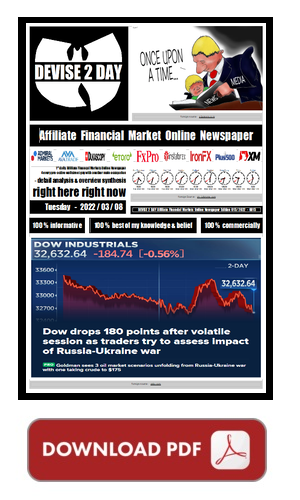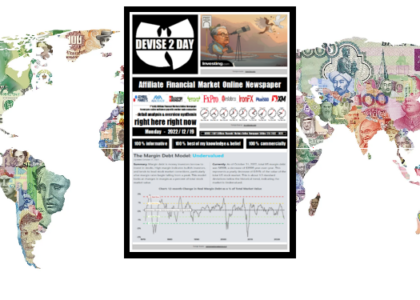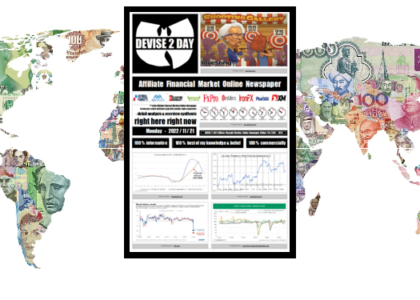
2022/03/08 (015) Technical Analysis – DXY
The USD As A Possible Safe Haven Currency?
The Fed Is Likely To Raise Interest Rates Most In Our West!
Also Because US Economy Outperforms All Other Western Countries?!
In July 2001, the DXY (USD Index) traded at a peak of 121,020 points. Before falling to as low as 111,310 points in September 2001. Just after the terrorist attacks on the World Trade Center in New York. Nevertheless, the DXY (US Dollar Index) then recovered just as quickly, up to 120.280 (January 2002) and or 120.40 (February 2002) before the currency market, which distributed currency traders around the world, then the DXY (US Dollar Index), in the following next 6 years (even from 2002 to 2008), down to 70.69 points (March 2008).
Since then (since March 2009) the FED has responded with decidedly cheap money – as a result, assets bubbles formed first in the 3 major US Stock Markets. So that the average valuation of US Stocks (even like the Dow Jones, S&P 500, and or NASDAQ 100 rose in historical comparison. And or so-called cryptocurrencies were created. And last but not least, inflation seems to be galloping away. Due to the irresponsible fiscal policy of the US Democrats. Because the USA – after Trump organized the US economy into an independent energy country for the first time in several decades – not only has to import oil from abroad again. But because the US Democrats also distribute state support to their voters. And with their US Lockdown Policy, they mask the country in the truest sense of the word down – and thus bring the US economy to a standstill. And thus drive up the prices of goods. Because the money supply in circulation is not only growing faster. But because the production chain also starts to stutter. There are delivery bottlenecks. So that it is hardly possible that scarce supply of goods, let alone production cost prices, come down. On the contrary. And that with a historically negative trade balance. What means, that the US foreign debt is growing and higher interest rates have to be paid. The debt arises because spending on imports exceeds revenue on exports of goods.
From an economic point of view, chronic deficits in a country’s foreign trade are always undesirable, and in many cases even highly problematic
However, there are no simple limit values for deficits. Very few OECD countries have chronic deficits. For the US, three disadvantages are dominant.
First, overall employment suffers when imports chronically exceed exports and no form of compensation for the disadvantage is found. The deficit country is then constantly at a disadvantage compared to the surplus country because the prosperity of its own society depends on the products and services from abroad. That`s why former US President Trump compared himself to surplus countries such as Germany, China and Japan, and also wanted surpluses. But the US Democrats, with Joe Biden, counteract Trump’s US economic policy – and thus make themselves (at least as far as the prosperity of Americans in the USA is concerned) financially and materially dependent on foreign countries. Because it goes without saying that surplus countries (such as Germany, Japan, as well as China), at least as far as the prosperity of their society is concerned (i.e. all taxpayers as well as consumers), can organize a much more independent homeland economic policy than the deficit countries.
Second, deficit countries also have problems with their exchange rates. Becaus they sell their services as well as products on the world market not so expensive – as compared to their imports. The USA has undergone a deep deindustrialization of its economic structure, losing market share to China, Germany and many other countries. As a result, employment shrank in old industrial regions, where Trump had a large part of his constituency. As a result, people with low or medium qualifications and older people who are no longer sufficiently adaptable recently voted for the US Republicans. And are meanwhile – without possibly being able to explain it in terms of monetary policy, let alone fiscal policy – disappointed with the economic policy of the US Democrats. Because their standard of living is simply getting more expensive – which not academics understand either. Because the most new innovative jobs have been created, at least in the USA, in the last few decades often in completely different regions, for example in California. Very high incomes are earned there, for example with the Internet giants in Silicon Valley. The exception was during Donald Trump’s term of office.
Thirdly, deficit countries, like the US Democrats under Joe Biden, try to compensate for the loss of competitiveness through higher budget deficits (“twin deficits” – in the national budget and in the balance of payments) or through higher indebtedness of private households or companies. The fact that the USA has been able to achieve relatively high growth in GDP and employment in recent years is primarily due to its fiscal policy: it has increased government spending – and lowered taxes, i.e. put the reduction of the high level of debt on the back burner. Which manifests itself in rising goods prices and production prices. Because the amount of money in circulation is growing faster than the supply of goods. And production stutters – due to the lockdown of the US economy.A flourishing economy was the basis of the historically highest approval ratings for former Republican US President Trump. No US Republican had more votes than he did. Overall, he had even more votes than his Democratic predecessor, US Democrat Barrack Obama. But the US voters didn’t want an alleged racist in the White House – not a child’s head. And chose Joe Biden, with his 40 years of experience. And he countered Donald Trump’s US economic policy. Which is manifested in rising prices in the USA – and has hardly anything to do with the Russian war in Ukraine. What many US economists close to the US Democracy are trying to sell us! Like the tail wag the dog, with all love and respect. However, this US democrat policy cannot simply continue as it is, because with almost full employment and higher inflation, interest rates must rise. Not good news for a US president who doesn’t just want to win the next election in 2024 again. But rather also the mid-term elections in autumn of this year 2022. There are therefore limits to compensating for the disadvantages of the trade deficit through credit-financed private and state spending. Which is why more and more of the so-called us working class, as well as various immigrants (asians, hispanics, blacks and or europeans) are increasingly dissatisfied with the policies of the US Democrats! What could lead to a political explosion in the fall of 2022?
How ever, the DXY holds advance on haven bid
The dollar index held its recent advance to above 99 on Tuesday, hovering levels last seen in May 2020 and benefitting from safe-haven flows as investors continued to assess geopolitical and economic uncertainties surrounding the Russia-Ukraine war. The ongoing conflict in Ukraine showed no signs of de-escalation and continued to disrupt global markets. This has led to a surge in commodity prices which fueled inflationary and growth concerns, presenting fresh challenges to central banks. Meanwhile, the Federal Reserve is set to raise interest rates by 25 basis points at the March meeting, but Fed chair Jerome Powell opened the door for moving more aggressively down the line should high inflation persist. Investors now await the US inflation report due out on Thursday which is expected to notch another multi-decade high of 7.9% in February.
I`m still fundamentally bullish on the US dollar. And would let emerging profits still run and run – if i would be long (even in the DXY). And that also in an historical context, with conservative long-term expectations for the whole year 2022. Maybe 2023 also? But that`s going too far today! First let`s watch the DXY (US Dollar Index) over the comming weeks…
good morning, good day, and/or good night
at whatever time, wherever you are !
right here right now :


















